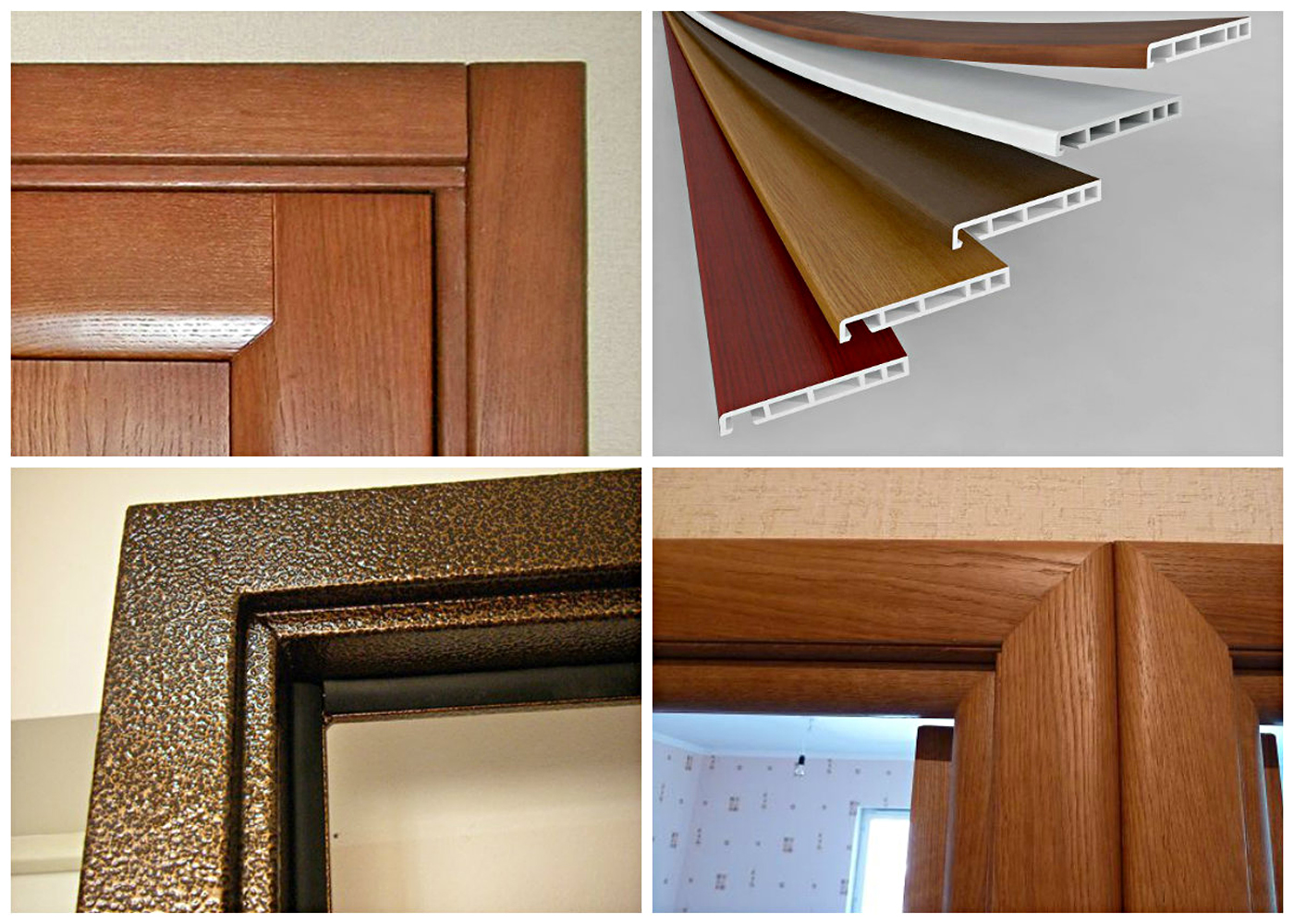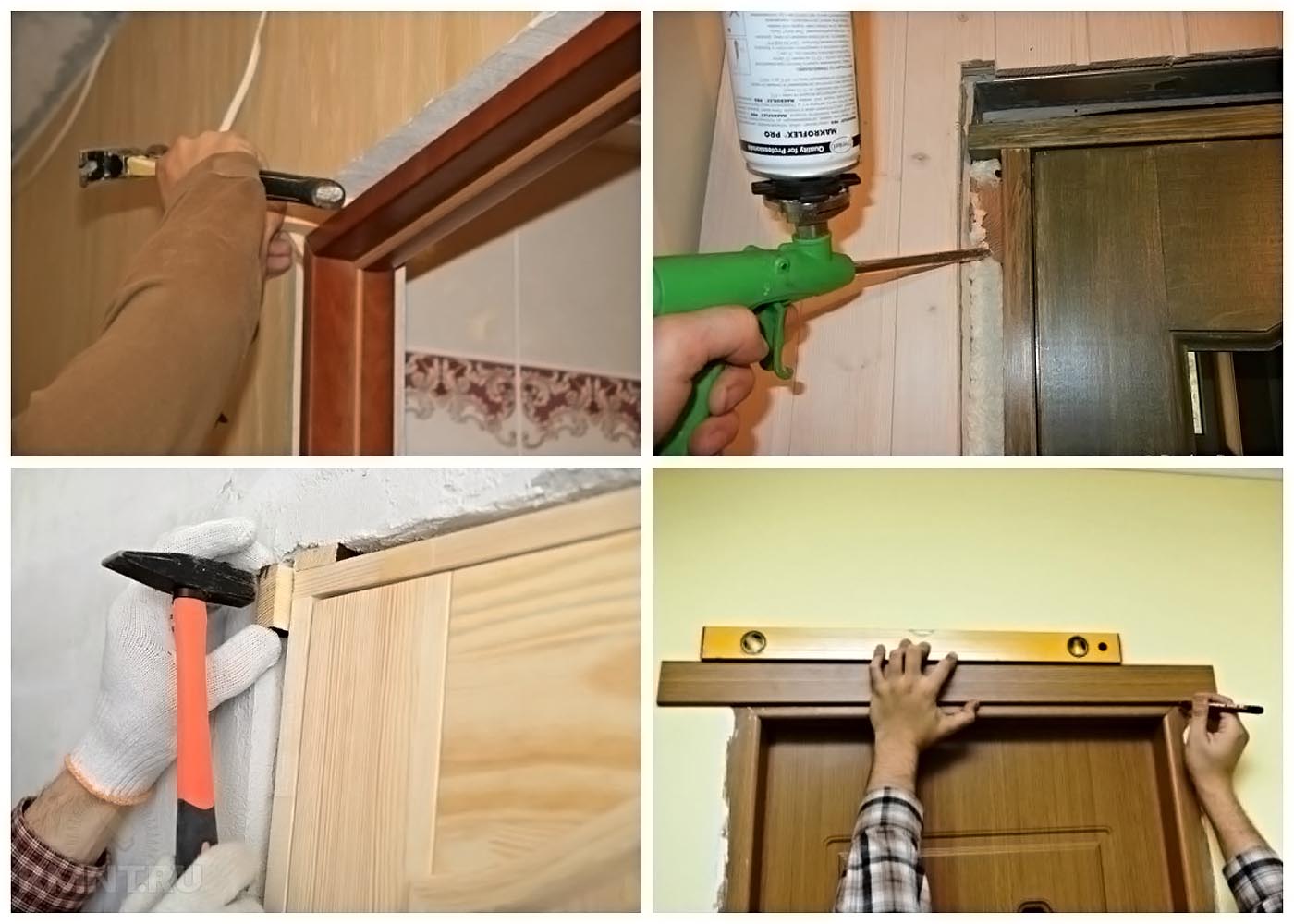
How to properly fix the trim on the door - this question often becomes relevant when carrying out repairs in the house. Doing it yourself is actually quite simple, if you know some of the nuances regarding the types of products and methods for fixing them around the perimeter of the opening.
There are several ways to fasten door frames.
Before we look at how you can attach trim to interior doors, you should familiarize yourself with their main types. The method of installation directly depends on the specific type of product.
According to the material of manufacture, they distinguish:

Varieties of door platbands depending on the material of manufacture
For budget options, pressed products are used. In a modern interior, MDF products are the most popular type; moreover, unlike other types of platbands, any mounting option is available for MDF.
In appearance and configuration, they distinguish:

Variations of platbands by configuration
Additionally, a capital can be installed above the upper casing. This element plays an excellent decorative role, especially when it comes to the classic style and variations close to it.
With regard to mounting methods, platbands can be installed in three main methods:
In order for the opening to look organic, it is important to observe the optimal dimensions for all details. Cutting elements can be done in two ways: at a right angle or 45 degrees. In the first case, the upper bar is most often installed above the sidewalls, while it must have an edge processed. With an oblique cut, you need to bring out the ideal angle so that the fragments fit together without gaps. For cutting it is better to use a miter box.
Before proceeding directly to fastening the platbands, you should properly prepare the work surface. The entire list of works can be conditionally divided into several stages:

Preparation of the working area for the installation of the door trim
The most traditional way to install architraves is to use nails. In order to hide the attachment points as much as possible, special miniature carnations are used, their peculiarity lies in the almost complete absence of a hat.
In order to properly nail the platbands on the door, you need to set them according to the level. Since when mounting on a wall, distortions or gaps can occur that were not on a flat surface, it is recommended to leave a small excess of material when sawing.
Since nails without hats are used for platbands of interior doors, try not to damage the coating of the cladding itself. It is most convenient to work with a small hammer. You can pre-mark the connection point with an awl.
In order to cover up the nails on the platbands, they mainly use a special mastic or grout to match the coating. Minor damage can be masked with paint, felt-tip pen or pencil.

The use of nails is the traditional way of fastening platbands.
Another method of fastening platbands involves the use of special glue. The most popular option is the so-called liquid nails. This compound provides fast traction on almost any surface.
Let's consider how to properly fix the platbands without ordinary nails. To do this, you must initially determine the exact position of each element. After that, apply a small amount of glue to the back of the plank and press it against the wall. If glue comes out from under the casing, wipe it off immediately. It is advisable to apply only a few dots to prevent spreading.
You can fix the platbands either completely without nails, using glue, or by combining these two methods, this will provide greater structural strength.

Fastening platbands to liquid nails simplify the process
The simplest is to attach telescopic architraves to interior doors. It is performed without nails, but can be supplemented with glue for greater strength. Mounting features are directly related to their design. The fact is that the edges of the platbands, when connected, coincide with the edge of the extension or loot. The principle of adhesion is "thorn-groove".

Telescopic platbands are mounted strictly in the groove of the box plank
In other words, one part goes inside the other. Thus, in order to install such products, it is enough just to saw off the excess and dock the parts. The protrusion of the element is inserted into a recess in the door frame. Then you need to set the required distance, which is regulated by the size of the recess.
Regardless of which installation method you choose for a particular situation, care should be taken, as one awkward movement can ruin the entire structure. If there are irregularities on the wall, it is necessary to first align them so that there are no gaps, this applies to absolutely all models of platbands, regardless of the material of manufacture and configuration.